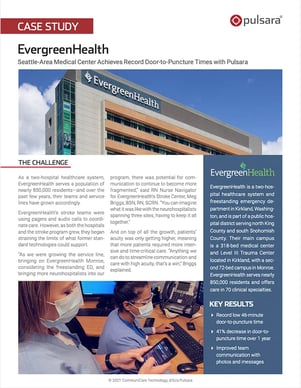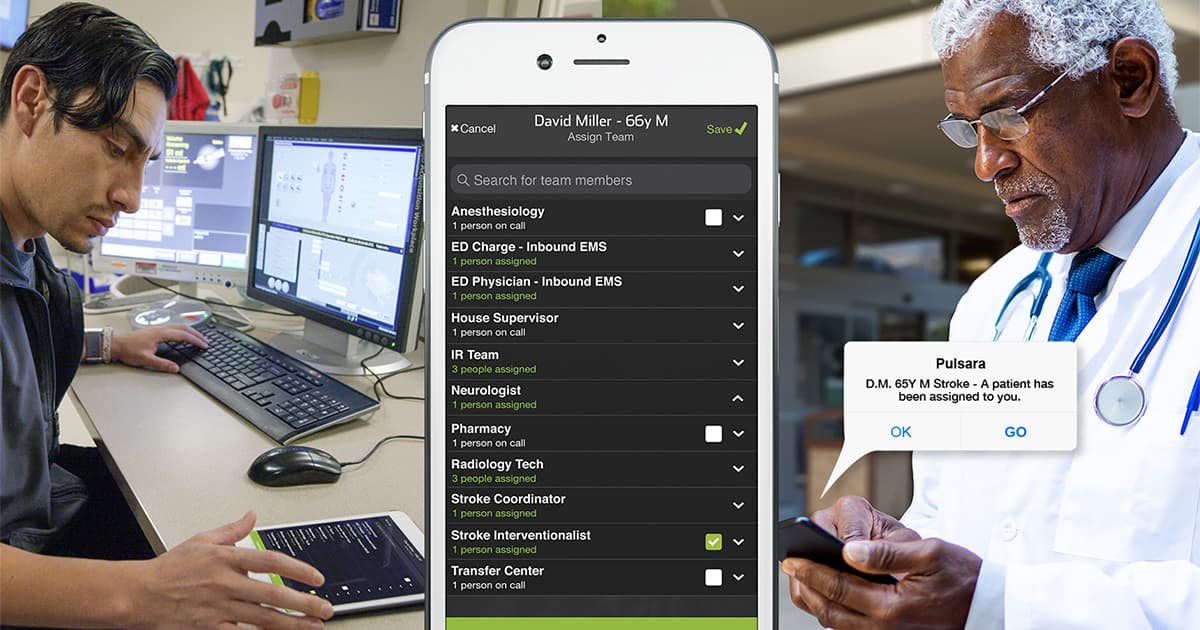As a two-hospital healthcare system with a freestanding emergency department and Level III Trauma Center, EvergreenHealth in Kirkland, Washington serves a population of nearly 850,000 residents. Over the past few years, their teams and service lines have grown accordingly.
EvergreenHealth’s stroke teams were using pagers and audio calls to coordinate care. However, as both the hospitals and the stroke program grew, they began straining the limits of what former standard technologies could support.
“As we were growing the service line, bringing on EvergreenHealth Monroe, considering the freestanding ED, and bringing more neurohospitalists into our program, there was potential for communication to continue to become more fragmented,” said RN Nurse Navigator for EvergreenHealth’s Stroke Center, Meg Briggs, BSN, RN, SCRN. “You can imagine what it was like with the neurohospitalists spanning three sites, having to keep it all together.”
 And on top of all the growth, patients’ acuity was only getting higher, meaning that more patients required more intensive and time-critical care. “Anything we can do to streamline communication and care with high acuity, that’s a win,” Briggs explained.
And on top of all the growth, patients’ acuity was only getting higher, meaning that more patients required more intensive and time-critical care. “Anything we can do to streamline communication and care with high acuity, that’s a win,” Briggs explained.
To optimize communication within their growing system, EvergreenHealth chose to implement a communication and telehealth solution that could scale with them: Pulsara.
In the summer of 2020, EvergreenHealth achieved a record low door-to-puncture time of 78 minutes with Pulsara. By the summer of 2021, they hit a new record low: 46 minutes. Within one year, EvergreenHealth decreased their record door-to-puncture by an additional 41%.
Download the case study to learn how EvergreenHealth improved communication with their stroke team, ultimately hitting two record low door-to-puncture times within the span of one year.

To learn more about how hospitals and EMS organizations are using Pulsara, check out our customer success stories. Pulsara is also helping with COVID-19 management by helping mitigate patient surge, streamlining patient transfers, minimizing exposure, and more. Learn more about COVID-19 + Pulsara here.
 Team Pulsara
Team Pulsara


![[PRESS RELEASE] Published Research Finds Up to 31% Faster STEMI Treatment Times in Rural Hospital Setting with Pulsara](https://www.pulsara.com/hubfs/_1_website-page-blog-assets/pulsara-hosp-teams-assign-cardio-stemi-rn-1200x701.jpg)

